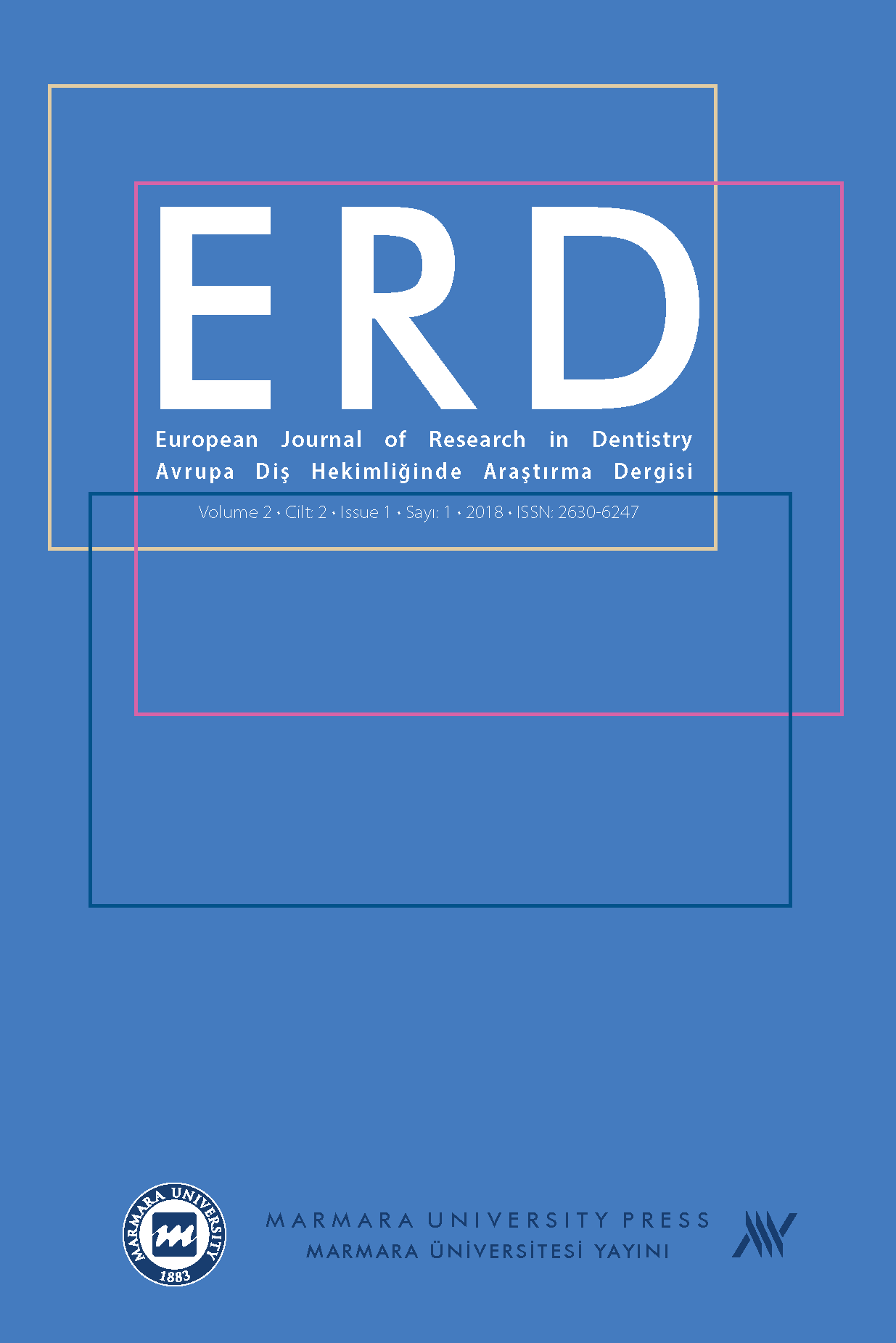Dental Age Assessment: Validity of the Nolla Method in a Group of Western Turkish Children
The aim of this study was to evaluate the validity of the Nollamethod for dental age estimation in western Turkish children. Thisstudy consisted of 688 orthopantomograms of patients of westernTurkish children aged between 7 and 17 years. Dental maturity wasevaluated according to the stages proposed by Nolla. A pairedt-test was used for statistical analysis. The mean difference betweenthe chronological and dental ages ranged from -1 to 0.13 years formales and from -1.15 to 0.25 years for females. The differencesbetween the CA and DA were statistically significant in 10-10.9,11-11.9, and 12-12.9 year age groups for males (p<0.05). Thedifferences between the CA and DA were statistically significant in7-7.9, 8-8.9, 9-9.9, 10-10.9, and 11-11.9 year age groups for females(p<0.05). The applicability of Nolla method is suitable for westernTurkish children except ages 10, 11 and 12 in males and 7, 8, 9, 10and 11 in females. Therefore, in this study, it is suggested that thereis a need for standardization in the Turkish population in ageestimation.
Anahtar Kelimeler:
Age determination by teeth, chronological age, dental age, nolla method
Dental Age Assessment: Validity of the Nolla Method in a Group of Western Turkish Children
The aim of this study was to evaluate the validity of the Nolla method for dental age estimation in western Turkish children. This study consisted of 688 orthopantomograms of patients of western Turkish children aged between 7 and 17 years. Dental maturity was evaluated according to the stages proposed by Nolla. A paired t-test was used for statistical analysis. The mean difference between the chronological and dental ages ranged from -1 to 0.13 years for males and from -1.15 to 0.25 years for females. The differences between the CA and DA were statistically significant in 10-10.9, 11-11.9, and 12-12.9 year age groups for males (p<0.05). The differences between the CA and DA were statistically significant in 7-7.9, 8-8.9, 9-9.9, 10-10.9, and 11-11.9 year age groups for females (p<0.05). The applicability of Nolla method is suitable for western Turkish children except ages 10, 11 and 12 in males and 7, 8, 9, 10 and 11 in females. Therefore, in this study, it is suggested that there is a need for standardization in the Turkish population in age estimation.
Keywords:
Age determination by teeth, chronological age, dental age, nolla method,
___
- Panchbhai AS. Dental radiographic indicators, a key to age estimation. Dentomaxillofac Radiol 2011;40:199-212.
- Cameriere R, Flores-Mir C, Mauricio F, Ferrante L. Effects of nutrition on timing of mineralization in teeth in a Peruvian sample by the Cameriere and Demirjian methods. Ann Hum Biol 2007;34:547-556.
- Kreitner KF, Schweden FJ, Riepert T, Nafe B, Thelen M. Bone age determination based on the study of the medial extremity of the clavicle. Eur Radiol 1998;8:1116-1122.
- Tanner JM, Whitehouse RH, Marshall WA, Carter BS. Prediction of adult height from height, bone age, and occurrence of menarche, at ages 4 to 16 with allowance for midparent height. Arch Dis Child 1975;50:14-26.
- Sisman Y, Uysal T, Yagmur F, Ramoglu SI. Third-molar development in relation to chronologic age in Turkish children and young adults. Angle Orthod 2007;77:1040-1045.
- Mornstad H, Pfeiffer H, Teivens A. Estimation of dental age using HPLC-technique to determine the degree of aspartic acid racemization. J Forensic Sci 1994;39:1425-1431.
- Miloglu O, Celikoglu M, Dane A, Cantekin K, Yilmaz AB. Is the assessment of dental age by the Nolla method valid for eastern Turkish children? J Forensic Sci 2011;56:1025-1028.
- Nur B, Kusgoz A, Bayram M, Celikoglu M, Nur M, Kayipmaz S, et al. Validity of demirjian and nolla methods for dental age estimation for Northeastern Turkish children aged 5-16 years old. Med Oral Patol Oral Cir Bucal 2012;17:e871-877.
- Tunc ES, Koyuturk AE. Dental age assessment using Demirjian’s method on northern Turkish children. Forensic Sci Int 2008;175:23-26.
- Cameriere R, Ferrante L, Belcastro MG, Bonfiglioli B, Rastelli E, Cingolani M. Age estimation by pulp/tooth ratio in canines by mesial and vestibular peri-apical X-rays. J Forensic Sci 2007;52:1151-1155.
- Ercalikyalcinkaya S, Dumlu A, Bekiroglu N, Kizilyel G, Kargul B. Demirjian’s system for estimating dental age among Northwestern Turkish children aged 4-16 years. Eur J Paediatr Dent 2013;14:225-230.
- Nolla C. The development of the permanent teeth. J Dent Child 1960;27:254-266.
- Bolanos MV, Manrique MC, Bolanos MJ, Briones MT. Approaches to chronological age assessment based on dental calcification. Forensic Sci Int 2000;110:97-106.
- Maber M, Liversidge HM, Hector MP. Accuracy of age estimation of radiographic methods using developing teeth. Forensic Sci Int 2006;159 Suppl 1:S68-73.
- Lewis AB, Garn SM. Relationship between tooth formation and other maturational factors. Angle Orthodont 1960;30:70- 77.
- Celikoglu M, Cantekin K, Ceylan I. Dental age assessment: the applicability of Demirjian method in eastern Turkish children. J Forensic Sci 2011;56 Suppl 1:S220-222.
- Willems G, Van Olmen A, Spiessens B, Carels C. Dental age estimation in Belgian children: Demirjian’s technique revisited. J Forensic Sci 2001;46:893-895.
- Demirjian A, Goldstein H, Tanner JM. A new system of dental age assessment. Hum Biol 1973;45:211-227.
- Legovic M, Sasso A, Legovic I, Brumini G, Cabov T, Slaj M, et al. The reliability of chronological age determination by means of mandibular third molar development in subjects in Croatia. J Forensic Sci 2010;55:14-18.
- Lebret LM. Reproducibility of rating stages of tooth formation. Am J Orthod 1971;60:90-91.
- Caro AC, Contreras IC. Analysis y comparacion de cuatro metodos radiograficos para determinar la ede dental (maduracion dental) en dientes permanents. Int J Dent Anthropol 2001;2:9-15.
- Olze A, Bilang D, Schmidt S, Wernecke KD, Geserick G, Schmeling A. Validation of common classification systems for assessing the mineralization of third molars. Int J Legal Med 2005;119:22-26.
- Muller-Bolla M, Lupi-Pegurier L, Quatrehomme G, Velly AM, Bolla M. Age estimation from teeth in children and adolescents. J Forensic Sci 2003;48:140-148.
- Başlangıç: 2015
- Yayıncı: Marmara Üniversitesi
